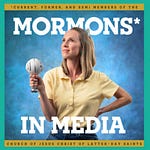As an urban planner, Mike Christensen seeks to improve the invisible infrastructure of public transit that connects diverse people to jobs, resources, and each other — or doesn’t. Mike is on the Salt Lake City planning commission and serves as executive director of the Utah Rail Passengers Association. He has spent years advocating for people whose transportation needs are invisible to those designing the system—much like singles navigating a church culture built around families. Today, he joins Diana and Mallory for a conversation about the unexpected parallels between transit planning and the single experience in the church.
"When all you've got is a hammer, everything looks like a nail," Mike explains. "If you're used to driving all the time, then everything looks like a parking spot or the lack of a parking spot. If the whole frame of reference is all based on families, then those who don't have those blessings really feel awkward." The metaphor illuminates how easily we turn to the tools we know best—whether cars or nuclear families—when we can't imagine life working any other way. Mike describes a sobering example, where his mid-singles congregation was shuffled between three buildings in 18 months with little to no advance notice, sometimes in response to complaints from married church members. The experience reinforced a sense that singles were "a problem that the church was trying to solve awkwardly rather than really taking a look at us and understanding our needs."
The episode also captures both the isolation and unexpected freedom that can come from living differently than those around you, whether that's taking trains instead of driving cars, or building meaning outside traditional family structures. In his journey form small-town Idaho to studying in Germany to living carless in Salt Lake City, Mike has learned that there are many ways to get around in life, and many ways to thrive.
Learn more about Mike’s urban planing advocacy here.













